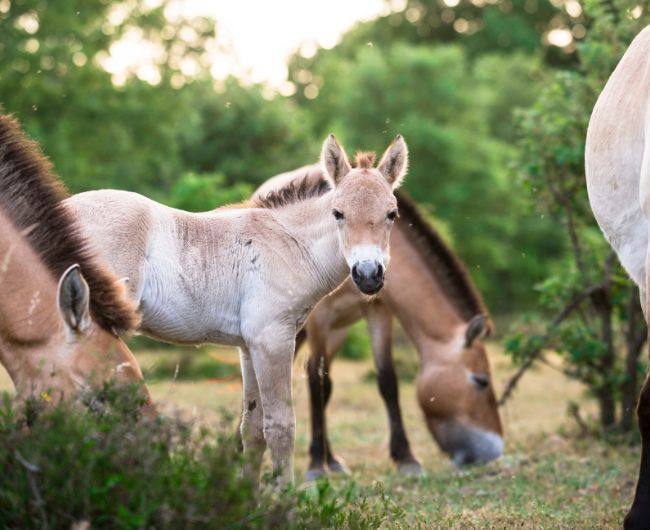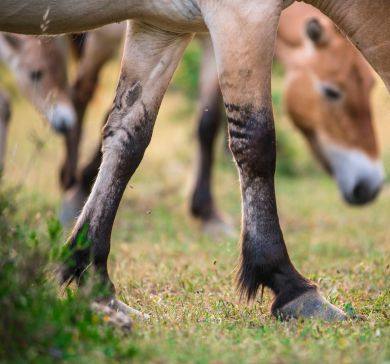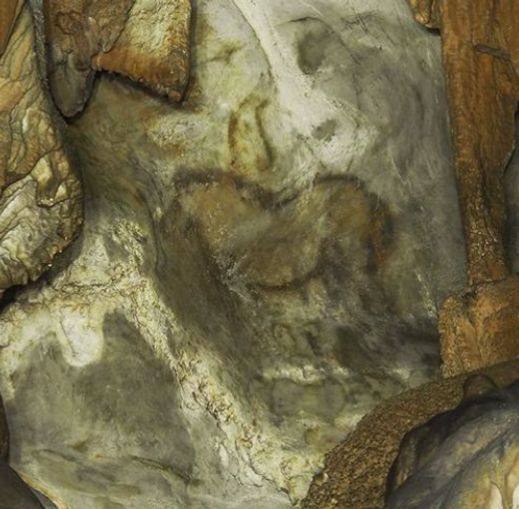The Wild Horse
The Przewalski
A survivor through the ages
WILD TAKH and the Fight for Survival
01

The WILD TAKH project
The WILD TAKH project is part of the international effort to prevent the extinction of the horse Equus ferus przewalski, the only wild Equus ferus still alive on Earth and also called Takh, which survived in Mongolia in freedom until 1964 when species got extinct and later was again reintroduced a few decades ago thanks to world conservation efforts.
It is the only wild Equus ferus that
survives today


with less than 3 ,000 specimens worldwide this should embarrass us considering it is extremely low population for a species once was millions.
The WILD TAKH project focuses in Spain
and Portugal for the moment
searching for large territories and economic resources to contribute to the international effort to bring forward this primal, free and indomitable horse.
As a substitute for the wild horse that disappeared from Iberia and Europe: The Tarpan, our horse is the best available to cover the ecological function of its extinct wild equivalent. Takh was discovered in 1879 by the Russian explorer Colonel Nikolai Przewalski.
Exploring Equine History with Joaquín Pascual-Barea
02
We summarize here the excellent article by Joaquín Pascual-Barea, from Cadiz University, entitled: “Equiferus Hispanus or Iberian Zebra:


The wild horse of the
Iberian Peninsula
from Antiquity to the Modern Era
which clarifies, as far as possible, the confusing processes suffered by the horse species in recent millennia. The professor says: “Current domestic horses come from the species Equus ferus that about 15,000 years ago spread across Eurasia from Alaska to Portugal. Throughout the Pleistocene it gave rise to different subspecies thanks to its plasticity and adaptability to the environment, and the isolation caused by seas and mountain chains.
This equus ferus
would be the origin in Holocene of the Iberian Peninsula equiferi(E. f. lusitanicus), of Central Europe (E. f. silvestris), of Southeastern Europe and Asia Minor (E. f. scythicus), Eastern European (E. f. ferus) would be the latter known as przewalskii and the only one surviving today, although it is not the ancestor of any current breed of domestic horse.
According to some analyzed remains
the Iberian zebra would have been the smallest subspecies of the Equus ferus of the Old Continent, surpassed in size by the Equus silvestris of Southern France and Germany, and by the tarpan (E. caballus gmelini) of the steppes. from Eastern Europe (Ukraine and Russia), which could have been in contact with the Central Asian Mongolian horse (E. ferus przewalskii). (…)
The prehistoric horses
represented in caves...
such as those of La Pileta in Málaga, del Moro in Cádiz, Tito Bustillo in Asturias, Altamira and La Pasiega in Cantabria, or Isturitz (…) from Altxerri and Ekain in the Basque Country or Peña Candamo in Asturias to Nerja in Málaga, observe the zebra stripes that the equus ferus from Southwestern Europe had on the neck and even in the abdominal regions.” (…)
Takh Wild Horse Extinction History and Global Conservation Efforts
03
This horse
This horse, 140 cm high, 300 kg in weight and 2 meters long, strong, stocky and untamable, became extinct in the wild in 1969.
There were 31 horses left alive in zoos in Prague and Munich. Of these 9 were reproduced until they reached over 2,000 today.
SPECIES CONSERVATION KICKSTART
In 1977, the Foundation for the Preservation of the Przewalski Horse was created in Rotterdam.
An exchange program begins between zoos to maximize genetic diversity and create reserves. They manage to breed more than 1,500 specimens.
BREEDING IN
CAPTIVITY
The largest captive breeding program in the world was until a year ago in the Askania Nova reserve in Ukraine
Since 1998, 31 horses were also been released into Chernobyl. Both locations are being severely affected by the war with Russia and the status of the horses is unknown.
BREEDING IN WILD CONDITIONS
Le Villaret (Cevennes National Park, France) of the Takh Association, is a project created to breed horses in wild conditions.
It began in 1993 with 11 horses from zoos to generate individuals capable of being reintroduced to Mongolia. In 2014 they sent 8 individuals to the Living Paleolithic project in Burgos.
RESERVES
The most important reserve in Europe is currently located in the Hortobágy National Park in Hungary, where 300 horses live on 3,000 hectares. In Berlin, 100 horses live at the former Döberitzer Heide military testing ground, now a nature reserve in Dallgow-Döberitz.
Also in 2003, the Mont's Dazur Biological Reserve was created, which has a population of about 50 horses. In 2023 this reserve sent 20 horses to two of our projects in Spain in one of the first projects done by Wild takh.
REINTRODUCTIONS
Reintroductions to Mongolia and China organized by Western European countries began in the 1990s. Several populations have been successfully released into the wild, in three areas in Mongolia and one in China by various transports.
In Russia, the first reintroduction was in Orenburg in 2016. There are plans to reintroduce them in Kazakhstan but with the war everything is uncertain in that area.
CURRENT
SITUATION
In 2005, the species' status on the IUCN Red List was reclassified from “extinct in the wild” to “critically endangered” and in 2011 to “endangered.”
But the reality is that we are facing a species highly threatened by the neglect and lack of commitment of the human beings who hunted it until its extinction in the wild in 1969.
Do you have any doubt?
Contact us
Fernando Morán.
Romadorio 75 – 33456 Asturias, Spain
Do you want to collaborate? Send your proposal
